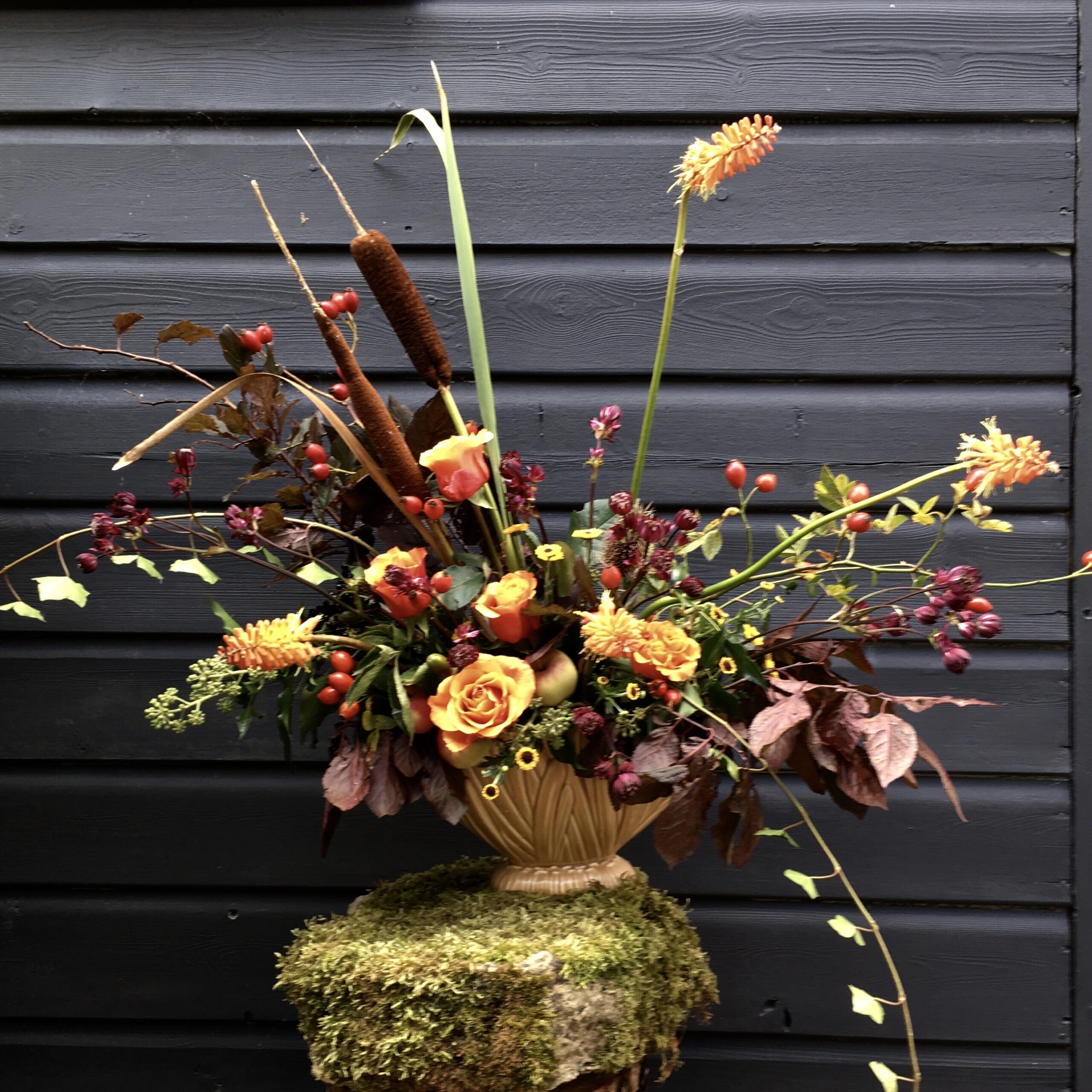
Foraged minimalism ©Wild Rosamund
‘How do you forage for wild flowers and where?’ is a question I’m often asked. The simple answer is ‘everywhere’. But I know the rules and so should you if you want to make sure you stay on the right side of the law. This is especially important if you have children with fingers itching to pick whatever they see.
Dr Trevor Dines, Botanical Specialist, at British conservation charity Plantlife, says: ‘Wild flowers don’t have to be out of bounds and out of our lives. We are very used to picking some plants, such as daisies to make chains, buttercups to see if we like butter, and blackberries and wild garlic to enjoy. But others wild flowers – such as oxeye daisy, cow parsley and red campion – are commonplace and even increasing in number and are OK to pick in small numbers for personal enjoyment. It’s about children starting a relationship with wild flowers – if they’re scolded for picking a posy for granny they might turn their back on nature forever.’
Responsible foraging
When you want to forage for wild flowers, you can help yourself to what Plantlife calls the ‘Four Fs’ – fruit, foliage, fungi or flowers as long as:
It’s for personal use
It’s not for sale, reward or other commercial use
You don’t uproot the plant or remove it from its natural habitat
It’s not a protected species on the Government’s Schedule 8 Plants Which Are Protected list
For me, as a floristry business owner, this means that if I want to forage for wild flowers I’m not legally allowed to sell what I pick. So if I add anything to my designs that I’ve gathered from the wild, that material is free.
What does this mean for you?
It means you are free to pick and enjoy some of our beautiful native flowers, foliage, fruit and berries but you should always check whether or not a plant is protected before getting scissor happy. And definitely no pulling up plants. Even moss, lichen, algae and fungi. Fine by me; I don’t think I’ll be dredging ponds for soggy weeds any time soon.

Foraged seedheads add texture to a rustic wedding. © Aaron Collett Photography
Where can you forage?
There are some restrictions but once you know them you can forage in confidence. Any council-run parks, gardens, roundabouts and even planted verges are off-limits, as are spaces planted by a particular organisation, such as a community garden or orchard. However, if you are foraging on private land such as your friend’s garden or a friendly farmer’s field, you can take whatever you like, provided the owner has given you permission. The only exception is any protected species growing there. These should never be cut or uprooted. Hedgerows, non-maintained verges and forests are all ok to pick from, but if in doubt check first that it’s not council or private property.
How much should you take?
The general rule is: don’t be greedy. Take from large thriving groups and leave some stems behind so they can seed and create the next generation and, more importantly, support our wildlife. It depends on native vegetation, fruits, berries and seeds for survival so forage fairly, making sure to leave enough for birds and animals to have their fill too.
And don’t forget, you’re not the only forager out there. Leave some for others, please! I remember one autumn when I wanted to add a few apples to an arrangement I’d made. I’d spotted an apple tree growing wild by the side of the road, laden with fruit. When I went back a few days later, someone else had stripped it bare!
If you’d like to do a flower workshop including foraged flowers, see our Workshops page for more info on how to book a private session with us.
To find out what you can and can’t pick, this article by Plantlife, has some good advice on the legal side of things.
And for those with (or without) children, find out all about Plantlife’s Great British Wildflower Hunt, which aims to reconnect little ones with nature and includes a really useful Code of Conduct for picking wild flowers.

